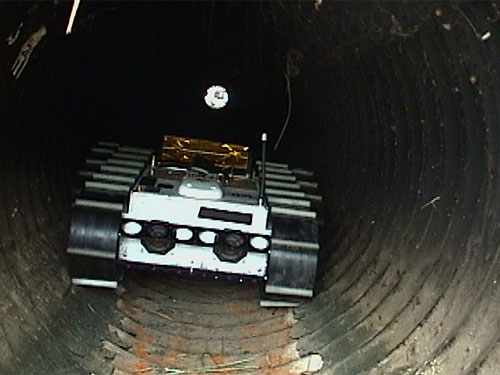 NEWS
NEWS
 NEWS
NEWS
 NEWS
NEWS
![]() Each year DARPA puts on an event known as the DARPA Robotics Challenge (DRC). This year the game has changed a bit with the introduction of the first ever DARPA Virtual Robotics Challenge (VRC). What this means is that the engineers that build these competing robotics have to develop their software in a virtual situation.
Each year DARPA puts on an event known as the DARPA Robotics Challenge (DRC). This year the game has changed a bit with the introduction of the first ever DARPA Virtual Robotics Challenge (VRC). What this means is that the engineers that build these competing robotics have to develop their software in a virtual situation.
Here’s how it works and no this is not like Robot Wars. DARPA first created this robotics initiative to better secure citizens during natural and manmade disasters. The entrants in the VRC develop software that makes the robots do things like pull a lever or push a button in a disaster zone with minimal supervision. The teams were also tasked with making a disaster-recovery robot, a great reason to test their strength in a virtual environment first. The goal is to help future robots perform the most hazardous jobs in disaster-response operations to reduce casualties and save lives. That’s what they simulate, and the winners get their software compete on actual robots in the DRC.
![]() The Open Source Robotics Foundation (OSRF) which runs the VRC found some serious performance issues on the initial platform they built this on, which was Amazon Web Services. Specifically the demands on the infrastructure were such that intra-server communications took a performance hit in that environment. That’s when they turned to SoftLayer Technologies, which is now part of IBM to host the VRC and answer these challenges. The simulations were demanding in power and speed, so SoftLayer introduced a bare metal dedicated cloud platform that was the only one that could get the server communication loop down to 1k/second. In addition to power and speed, SoftLayer also delivered a raw compute offering without any extra virtualization.
The Open Source Robotics Foundation (OSRF) which runs the VRC found some serious performance issues on the initial platform they built this on, which was Amazon Web Services. Specifically the demands on the infrastructure were such that intra-server communications took a performance hit in that environment. That’s when they turned to SoftLayer Technologies, which is now part of IBM to host the VRC and answer these challenges. The simulations were demanding in power and speed, so SoftLayer introduced a bare metal dedicated cloud platform that was the only one that could get the server communication loop down to 1k/second. In addition to power and speed, SoftLayer also delivered a raw compute offering without any extra virtualization.
In preparation for the VRC, OSRF configured SoftLayer’s platform into a highly specialized format so that teams were able to control their own server constellation apart from other teams. Through SoftLayer’s API, each team was given five connected servers, including two high-end NVIDIA dual Intel Sandy Bridge servers with GPU, isolated from any others in the competition. Teams were able to reload their own servers as needed, and OSRF could reset constellations to their virgin state once each team finished its simulation.
“SoftLayer was a true partner in hosting the VRC Simulator and worked with our team closely to pre-test machines for the competition,” said Brian Gerkey, CEO of OSRF. “The VRC was an unprecedented initiative and required technology partners that were willing to go the extra mile to assure that this event made its mark in history.”
As a result 100 teams from around the world participated in the VRC, with SoftLayer’s global platform allowing them to compete from remote locations.
This is a big win for SoftLayer and it is a big statement on the advantages of dedicated performance versus public cloud structure, the direction that SoftLayer is going with their cloud solutions, and their alignment with customer objectives. As the cloud continues to grow into new industries, SoftLayer is pushing the limits of performance by setting the bar for bare metal servers.
THANK YOU